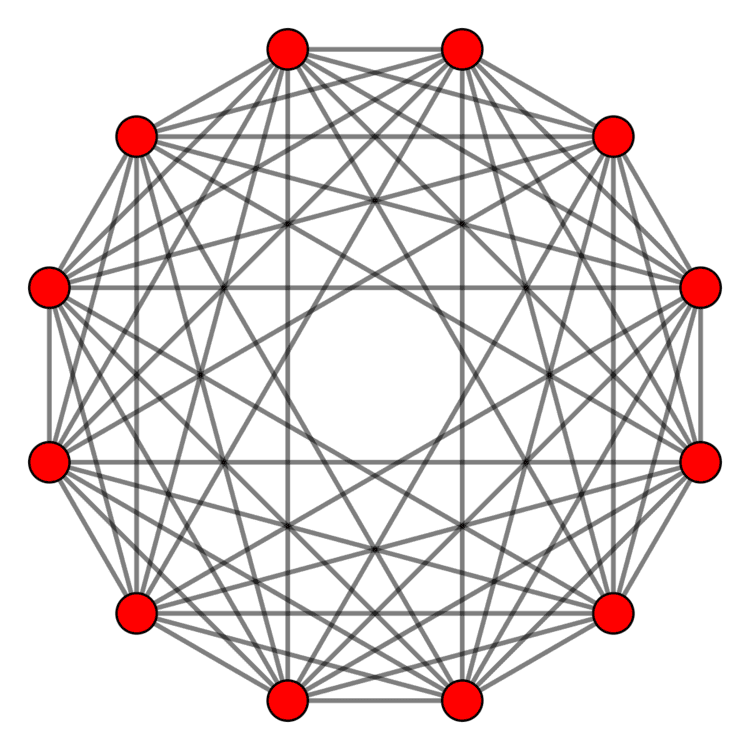 | ||
In six-dimensional geometry, a rectified 6-orthoplex is a convex uniform 6-polytope, being a rectification of the regular 6-orthoplex.
Contents
- Rectified 6 orthoplex
- Alternate names
- Construction
- Cartesian coordinates
- Root vectors
- Birectified 6 orthoplex
- Related polytopes
- References
There are unique 6 degrees of rectifications, the zeroth being the 6-orthoplex, and the 6th and last being the 6-cube. Vertices of the rectified 6-orthoplex are located at the edge-centers of the 6-orthoplex. Vertices of the birectified 6-orthoplex are located in the triangular face centers of the 6-orthoplex.
Rectified 6-orthoplex
The rectified 6-orthoplex is the vertex figure for the demihexeractic honeycomb.
orAlternate names
Construction
There are two Coxeter groups associated with the rectified hexacross, one with the C6 or [4,3,3,3,3] Coxeter group, and a lower symmetry with two copies of pentacross facets, alternating, with the D6 or [33,1,1] Coxeter group.
Cartesian coordinates
Cartesian coordinates for the vertices of a rectified hexacross, centered at the origin, edge length
Root vectors
The 60 vertices represent the root vectors of the simple Lie group D6. The vertices can be seen in 3 hyperplanes, with the 15 vertices rectified 5-simplexs cells on opposite sides, and 30 vertices of an expanded 5-simplex passing through the center. When combined with the 12 vertices of the 6-orthoplex, these vertices represent the 72 root vectors of the B6 and C6 simple Lie groups.
Birectified 6-orthoplex
The birectified 6-orthoplex can tessellation space in the trirectified 6-cubic honeycomb.
Alternate names
Cartesian coordinates
Cartesian coordinates for the vertices of a rectified hexacross, centered at the origin, edge length
Related polytopes
These polytopes are a part a family of 63 Uniform 6-polytopes generated from the B6 Coxeter plane, including the regular 6-cube or 6-orthoplex.
